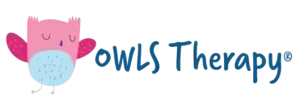Summer slide. Sounds fun, right?! Well, sadly this is not the kind of slide that results in fun twists and turns and maybe splashing into a refreshing pool of water at the very end. Today’s blog post is about the term Summer Slide and what it means for children. While it may only be April, everyone knows that Memorial Day is just around the corner and summer is just a hop, skip, and jump away!
So, what is Summer Slide? Summer Slide is the term used to describe the toll that summer vacation can take on a child’s academic knowledge. Research has shown that children score lower on standardized tests after summer vacation than they did on the sametest BEFORE summer vacation. Children fall behind an average of 2 months of reading and, sit down for this, lose about 2.6 years of math computational skills over the summer. 2.6 YEARS?!?!? So now that we have established that Summer Slide is real and something to worry about, where do we go from here?
First, just because school is out, doesn’t mean that all academics should stop. The most important thing that children can do is read, read, and read some more. More than half of the 9thgrade achievement gap in reading can be explained by unequal learning opportunities during elementary school summers. While summer might be filled with trips to the pool and beach, make sure that they are also equally filled with trips to the library and book store. We’re supposed to avoid the sun when it’s at its hottest so implementing an afternoon reading time could be just the break needed! Children’s magazines are another great way to incorporate reading and some learning without it feeling like work. Ranger Rick, Highlights, Sports Illustrated Kids, National Geographic Kids, Lego Cluband American Girlare just a few of the titles out there. Plus, I don’t know a single child who doesn’t enjoy receiving something in the mail!
While it may be hard to set aside a distinct time for working on academic skills, get creative with how you can incorporate learning into everyday activities. When you are at the grocery store, have your child calculate simple math problems like “if I buy 3 packages of strawberries when they are priced at 2/$5, how much would that be?” or reading the back of cereal boxes for which one has, for example, the least amount of sugar. Baking and cooking with your child is another excellent opportunity to expose your child to real world use of math and reading. Following a recipe’s directions requires not only reading the recipe but also doing the math to measure out ingredients (i.e., which measuring cups do you need to use to make ¾ cup?)
And lastly, while we don’t want to slide backwards in the summer, if your child is experiencing difficulty with reading or their speech and language skills, summer is an excellent time to continue to develop those skills and potentially get ahead. Schedules are not as packed and brains are not as tired from a full day at school.
